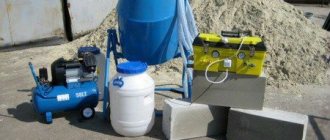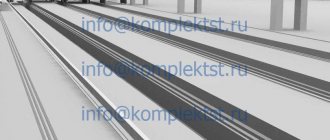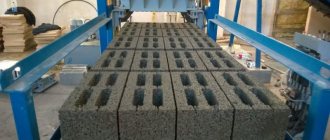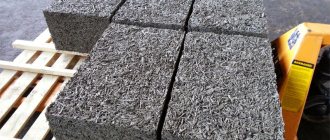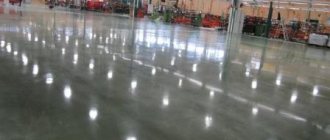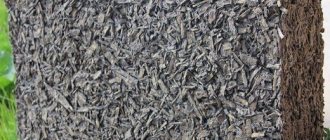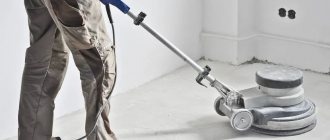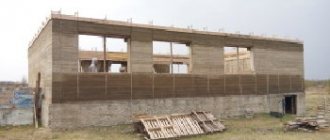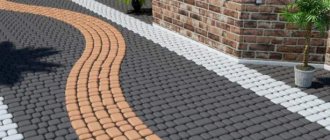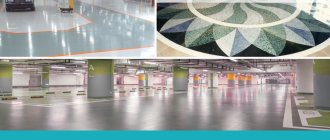Modern concrete solutions come in a wide variety of types and subtypes that have begun to compete with the classic recipe of this material. One of them is polystyrene concrete, which belongs to the category of lightweight concrete. It got its name due to the fact that it uses polymer granules – polystyrene – as a filler. They create voids inside the concrete mass, making the material lightweight with high thermal characteristics. The equipment for polystyrene concrete is practically no different from the line for the production of traditional mortars, therefore the production technology is almost identical to the standard one.
Polystyrene concrete itself has become a serious competitor to aerated concrete and foam concrete. And all because the production technology of polystyrene concrete blocks is much simpler than gas and foam blocks.
Permits and documents
Business registration
The production of polystyrene concrete is a fairly large-scale project.
Primarily due to distribution channels. It will be easier to conclude agreements with large suppliers and wholesale distribution points with a registered LLC. To register an LLC, you must select a name for the company and register a legal address. Submit a completed application in the prescribed form along with a package of constituent documents:
- The decision to create a legal entity if there is only one participant
- Agreement and minutes of the general meeting, if there are several participants
- LLC Charter
You can pay the state fee at any Sberbank branch. You will also need to obtain permission from the State Fire Safety Inspectorate and a certificate of compliance with safety standards.
Polystyrene concrete at home - process features
The main difference between this material and standard solutions is the presence of polystyrene in it, which replaces fillers (sand and crushed stone). That is why the mixture turns out to be light, but with lower strength than classic concrete solutions.
What is needed to prepare the working solution
The composition of polystyrene concrete is cement, polystyrene, water and the additive SDO. The latter stands for wood-saponified resin. It is sold in hardware stores in the form of a liquid packaged in plastic containers. There is also a dry powder that can be independently diluted with water in a ratio of 1:10. Purpose of this material:
- reduce the density of polystyrene concrete;
- reduce the amount of water added to the solution;
- fasten other ingredients together into a monolith, because cement and polystyrene granules do not adhere to each other;
- increase the plasticity of concrete.
As for polystyrene as a filler, you can use the following when preparing the mixture yourself:
- granules, which are sold in building materials stores;
- pieces of polystyrene foam boards or polystyrene foam, which are crushed with your own hands.
In the first case, a more durable concrete solution with a higher density is obtained than if small pieces are added to the mixture. It is from granulated polystyrene concrete that screeds can be poured inside houses. If the load on the floors is insignificant, for example, in a bedroom or office where there is little traffic, then the floors can be filled with the lump variety.
Basically, polystyrene concrete is used to form the walls of frame houses, to make wall blocks, as well as slabs that are used to insulate facades, floors and other building structures. Floors and ceilings are rarely formed from this material.
As for cement, the best option is M500. It is difficult for a private developer to obtain, plus the price is high, so the M400 brand is often used. When producing polystyrene concrete mixtures, standard recipes are used, where the brand of cement can be changed. For example, if M300 was purchased, then it is added to the solution in a quantitative equivalent of 10-15% more material.
The higher the grade of cement, the more filler can be added to the mixture.
The water should be warm and clean. Other characteristics are not taken into account when making concrete yourself.
Selecting a room
An industrial premises with an area of at least 100 square meters will suit you. The optimal location is the outskirts of the city or even the region. Availability of communications is an important factor when choosing a location.
Example of a room of 100 sq. m. Separately, provide for the possibility of unhindered access to the warehouse. As a rule, renting industrial premises is cheaper than renting public or administrative premises. Monthly payments will be about 70'000 ₽.
How to make a concrete mixer for polystyrene concrete with your own hands
To make a forced-action concrete mixer yourself, you will need the correct drawing, which you can draw yourself or use a ready-made one, downloaded from the Internet. The simplest design includes a main container, an electric motor, an unloading hatch, a filling hole, a drum, and a frame.
Materials that will be needed in the manufacture of a concrete mixer:
- Electric motor, shaft and blades.
- Small barrel.
- Bearings – 2 pcs.
- Metal corners.
You will also need the following tools: welding machine, drill, grinder.
The mixer for polystyrene concrete is made as follows:
- First, using a grinder, cut out the bottom of the barrel, and then the neck for mounting the electric motor.
- A hole is cut out on the side of the barrel for loading the ingredients of the concrete mixture, gluing it with rubber around the perimeter.
- The frame of the mixer is made of metal corners and the barrel is placed on them.
- A shaft with blades is installed inside the container, which will ensure uniform mixing of the ingredients.
- An electric motor is installed at the bottom of the barrel.
The more powerful the equipment, the more productive it will work.
It is more efficient to use a drive motor with a rotation speed of at least 1500 rpm. After assembling the concrete mixer, you can immediately begin using it.
Equipment
The technology for producing polystyrene concrete is similar to the production of conventional concrete, with the difference that cement mortar and crushed stone are replaced with polystyrene foam granules. It is also possible to add special components for quick setting. After mixing, the mass is poured into molds and waited for it to harden.
The optimal solution is to order a production line immediately, rather than purchasing equipment separately. The total cost will be about 3'000'000 ₽.
Diagram of a polystyrene concrete production line
List of required equipment for productive work:
- Band conveyer
- Pre-expander
- Concrete mixer
- Dosing hopper
- Vibropress
- Steam generator
- Set of forms
Automated lines for the production of polystyrene concrete
- Capacity 30 m3/shift
- Capacity 50 m3/shift
- Capacity 100 m3/shift
The Construction Technologies of Siberia company designs and completes automated plants for the production of polystyrene concrete products. When designing the lines, it is possible to produce commercial polystyrene concrete mixtures with subsequent shipment to concrete trucks. The main concept in the development of these technological lines is to manage the level of quality and stability of the parameters of the manufactured products at the stage of designing technological methods and the component composition of the polystyrene concrete mixture with maximum consideration of the degree of their interaction, as well as the development of automation and quality control systems at all stages of product production.
Advantages
Automation of technological operations management processes
The production lines use electronic systems to control the supply and dosing of raw materials in the mixing section. Management systems provide functions for accounting and control of raw materials. The operation of the mixing section is controlled by one operator. At the section of sawing the massif, the work of the cutting complex is also controlled by one operator. The process of stripping forms and placing blocks on pallets is automated.
Dosing stability
Raw materials are fed into a weigh feeder equipped with load cells and a weighing controller to achieve accurate weighing. Polystyrene granules are dosed using a volumetric dispenser.
High performance
It is provided by an automated system for feeding and dosing raw materials, as well as the loading speed of the mixer. High speed of sawing the massif into blocks of given sizes is ensured by a high-performance cutting complex.
High quality products
High quality of products is ensured by an automation system for technological processes, which guarantees high accuracy of dosing of components, uniformity and stability of the mixture composition, ensuring the production of high-quality and competitive products.
Raw materials for the production of polystyrene concrete
- Astringent. Portland cement or Portland slag cement of grades M-400, M-300 according to GOST 10178 is used as a binder.
- Aggregate. Foamed granulated polystyrene (PVG), which is a product of single or multi-stage foaming, is used as a filler.
- Mixing water. Water is used that meets the requirements of GOST 23732
- Mold lubricant. SDF mold lubricant or other anti-adhesive compounds are used as a lubricant for molds, ensuring high-quality demoulding of forms.
- Siliceous component Used in the production of high-density polystyrene concrete.
- Chemical additives Chemical additives used for the preparation of polystyrene concrete (air-entraining, plasticizing, hardening regulating) must meet the requirements of GOST 24211.
BRIEF DESCRIPTION OF THE TECHNOLOGICAL PROCESS
1. Preparation of polystyrene concrete mixture
Foaming polystyrene
The raw material (polystyrene beads) enters the receiving hopper of the pre-foamer, then the polystyrene is fed into the pre-foamer chamber using a screw feeder. The primary foaming of polystyrene beads is carried out in the pre-foamer chamber with hot water vapor generated in a steam generator. After foaming, the polystyrene enters the granule drying conveyor to reduce moisture and oxygen saturation. After drying, the granules are sent to storage bunkers using a pneumatic transport system. Secondary or multiple (if necessary) foaming of polystyrene granules is carried out in the same way as primary foaming.
Pouring water into the mixer
Water dosing is carried out using an electronic water dispenser. The operator of the mixing section enters the required amount of water on the control panel and starts the mixer loading cycle.
Loading the mixer with raw materials
With the help of a weight controller, the process of loading weighing dispensers with raw materials (cement and silica component, if used), as well as the process of loading foamed polystyrene into a volumetric dispenser, is carried out. Loading of cement is carried out by a screw conveyor, loading of polystyrene by a pneumatic transport system. Next, the cement is unloaded from the dispenser into the mixer, the solution is mixed for 2-3 minutes until smooth. After completing the preparation of the solution, from the chemical dispenser. additives, an air-entraining additive is loaded into the mixer, then polystyrene is unloaded into the mixer, after which the mixture is mixed for 1-2 minutes. The operator monitors all processes in the mixing section in real time. If necessary, the operator can adjust or change the current recipe, mixing time and other technological parameters on the control panel. The equipment can operate in both automatic and manual modes.
2. Formation of the array
The finished mixture is unloaded through the mixer valve into a mold with a volume of 0.85 m. The mold is filled with the mixture in one step. The form consists of a base and removable, interchangeable sides. Before pouring, the mold is lubricated and transported to the mixing station where pouring is performed.
3. Array exposure
After pouring, the mold is moved along a rail track to the holding section, where the stripping strength is gained by the mass. The time required to gain stripping strength can range from 4 to 7 hours and depends on the density of polystyrene concrete, cement activity, temperature, etc.
4. Form removal and sawing of solid wood
After the array has gained the required strength, the mold with the array is transported along rails to the formwork complex, and the base of the mold is fixed on the rail track. Next, using a gripper, the four sides of the form are removed and raised. After stripping, the base of the form with the array is moved to the sawing area. The released sides are installed on a free base located on the adjacent rail track. The assembled form is sent to the pouring area. Sawing of the massif into blocks of given sizes is carried out using an automated cutting complex ARK-003. The base of the mold with the array is fixed by a gripper on the rail track in the operating area of the complex, after which the operator starts the cutting complex. Moving along the guides, the complex cuts the array in a vertical plane and trims the array on both sides. After completion of sawing vertically, the complex cuts the array in a horizontal plane into blocks of specified sizes, and the top is cut off. If necessary, the complex trims the bottom layer.
5. Laying blocks on pallets, packaging and warehousing
The base of the mold with sawn solids is fed to the complex for laying blocks on a pallet. The base of the form is fixed on the rail track. Next, using a gripper, half of the sawn wood is moved onto the pallet. To fill a pallet, eight blocks are added manually. Then the second part of the array is moved onto the pallet and eight blocks are also added (depending on the size). The pallet with blocks is covered with stretch film.
6. Heat and moisture treatment of blocks (HMT)
Depending on the climatic zone and the type of material being produced, blocks packed on pallets can gain brand strength in the finished product warehouse, or during additional heat and moisture treatment. Heat and moisture treatment of blocks is necessary for accelerated strength gain by blocks. The heat and humidity treatment mode involves keeping the blocks in the chamber for 12-15 hours at a temperature of +60-80°C. The HME mode also depends on the density of the material, the activity of cement and is determined by the customer for each specific type of product.
7. Recycling of waste generated during sawing
During the sawing process, the array is trimmed on both sides and the top is cut off. A promising solution for using polystyrene concrete scraps is the use of a waste crusher “DG-1”. The crusher allows you to crush polystyrene concrete scraps to a fraction of 0-30 mm. The material formed after crushing can be used as bulk insulation for thermal insulation of roofs, attics, floors, etc. The use of a crusher makes it possible to make the production of polystyrene concrete virtually waste-free.
GENERAL TERMS
In order to reduce costs on the part of the customer, the line is supplied without a cement silo and rail tracks for moving molds. Drawings for self-production are provided for these products.
In addition, the customer ensures the presence of chambers for heat and humidity treatment of the blocks. For 2-shift operation of the line, the customer will need additional mold bases.
The supplied equipment is provided with a 12 month warranty. The complete set of each piece of equipment is indicated in the contract, product passport, and bilateral acceptance certificate.
The layout of the equipment in the customer's production premises is developed by specialists. Installation of equipment is carried out by and at the expense of the customer, in accordance with the equipment layout. The customer is provided with a placement project (drawings) linked to the premises and a detailed illustrated installation manual for the equipment.
After the customer completes the installation of equipment and connection of communications, the following work is carried out:
- commissioning of equipment;
- selection of polystyrene concrete composition;
- development of product production technology;
- training of customer personnel.
Compliance with all safety regulations, labor protection, environmental safety and other local regulations is the responsibility of the Customer.
Expenses associated with travel and accommodation of representatives during the work are paid by the customer.
When developing the technology, the optimal composition of polystyrene concrete is determined using raw materials provided by the customer. Consulting support is provided.
After putting the equipment into operation, the customer is provided with a set of technical documentation, including:
- technological regulations for the production of products;
- process map
- job descriptions;
- safety instructions;
- GOST standards.
DELIVERY CONDITIONS
The price is indicated on EXW-Novosibirsk (Russia) terms and does not include the cost of customs clearance and delivery. Equipment manufacturing time: from 30 working days from the date of receipt of the advance payment.
TERMS OF PAYMENT
1 payment – 70% of the contract value within 5 days from the date of signing the contract;
2nd payment – 30% of the contract value within 5 days from the date of notification of the readiness of the equipment for shipment.
Ask a Question
How to choose a supplier
Main raw materials for production:
- Band conveyer
- Pre-expander
- Concrete mixer
- Dosing hopper
- Vibropress
- Steam generator
- Set of forms
Pay special attention to the choice of raw materials. Expanded polystyrene balls should not exceed 5-6 mm in diameter. To obtain blocks of the required density, hardness and load-bearing capacity, the size of the balls must remain stable during foaming. A high-quality finished block of polystyrene concrete does not press through.
Raw material costs depend on productivity. The cost of one cubic meter of polystyrene blocks costs 1,800 rubles. Budget about 360,000 rubles monthly for raw materials.
Manufacturing technology of polystyrene concrete blocks
Before purchasing equipment for making blocks, you need to decide on the technology for their production, which, of course, depends on the starting capital. There are two ways to obtain finished products: injection molding and vibrocompression. Below are the features and benefits of both methods.
- Molding technology. When using this method, the finished mixture of components is poured into molds (cassettes) or formworks lubricated with a special composition. Finished products undergo a long hardening process directly in injection molds. Products obtained in this way have low or medium density, which prevents their use in structures with large load-bearing loads. The advantage of this technology is the low price of the equipment and ease of implementation.
- Vibrocompression technology. This method is used in the production of polystyrene concrete blocks from rigid mixtures with an increased volume of cement and a minimum water content. The technology makes it possible to produce durable, high-density products that can withstand heavy loads. The process of forming blocks takes place on vibrating machines in special pallets. After molding, the finished product is dried in the open air or in special thermal chambers. The technology is ideal for the production of high-quality polystyrene concrete blocks in mass production.
The brand of blocks depends on the volumetric content of components in the initial mixture and manufacturing technology. Molding technology makes it possible to produce products of grades from D150 to D400, more durable products of grades D500 and D600 only using the vibration pressing method. As mentioned above, the choice of technology for the production of polystyrene concrete blocks depends on the starting capital. Both technologies will be discussed below from the point of view of organizing a business!
Pros and cons of a business idea
Advantages:
- Business in an economically stable industry
- Growing interest in polystyrene concrete as a building material
- Low cost of production
Flaws:
- Difficulties in establishing wholesale distribution channels
- Competition with other manufacturers in the market
- High investment at the start
Despite the possible risks, the production of polystyrene concrete is a profitable project. However, you should start implementing the project only if you have business experience and established contacts in the construction industry. Let everything work out!
Mini-plant for the production of polystyrene concrete blocks
A small enterprise for the production of blocks must be located in a room where it is possible to install the necessary equipment with connections to communications, as well as store the raw materials and finished products necessary for production. To organize the technological process for the production of 450 cubic meters. meters of blocks per month for single-shift work, you need to purchase the following equipment.
- Machine for vibration-type polystyrene concrete blocks – 250 thousand rubles.
- Containers for mixture ingredients – 40 thousand rubles.
- A device for dispensing and supplying mixture components – 50 thousand rubles.
- Concrete mixer of the required productivity - 50 thousand rubles.
- Chopper of finished polystyrene foam – 30 thousand rubles.
- Conveyor for finished products – 40 thousand rubles.
- Other additional equipment – 50 thousand rubles.
The average cost of purchasing equipment will not exceed 510 thousand rubles. Installation of equipment will cost approximately 50 thousand rubles. The total cost of starting the production of polystyrene concrete blocks will be no more than 900 thousand rubles. This amount will include the following expenses:
- costs of registering an enterprise, renting premises and salaries to employees;
- energy costs, equipment price, cost of purchasing raw materials and other expenses.
The cost of polystyrene concrete blocks with such an organization of the production process will be 2.3 thousand rubles per cubic meter. The market value of the blocks is 3.5 thousand rubles per cubic meter. Monthly production costs will amount to 400 thousand rubles. Taking into account all of the above financial indicators, the revenue of the mini-plant will be 1.57 million rubles, and the net profit will be 140 thousand rubles. Based on calculations, the initial investment pays off within 8 months, which indicates the high profitability of the business.
Composition of the production line
Much will depend on the production volumes that were planned. It should be noted that in order to produce monolithic polystyrene concrete, a variety of units can be used. Naturally, if you plan to produce products in small batches, then a small set of installations may be enough. If volumes gradually increase, then it will be necessary to purchase additional equipment with which you can increase productivity.
